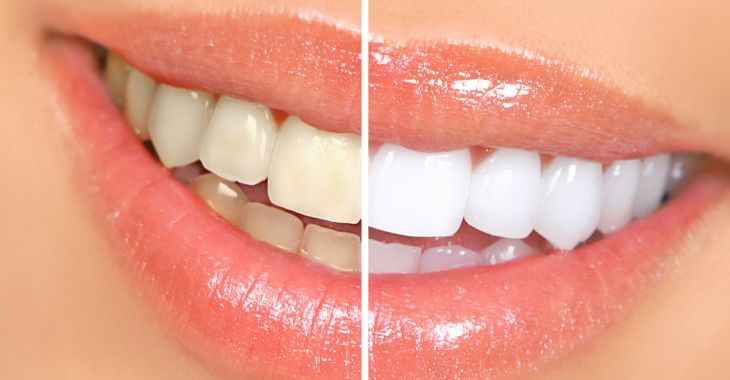What Is the Difference Between a Tooth Cavity vs Stain?

When you have a cavity or carie on your teeth, it can cause a brown or darkened spot on the surface. However, not all tooth discolorations are cavities; some may just be stains. If you notice brown, yellow or black discolorations on your teeth, you need to know the difference between a cavity vs stain.
What Is a Tooth Cavity?
A tooth cavity is an area of tooth decay. When there are food particles on your teeth, especially sugary foods, bacteria feed on the food. The acids created by the bacteria interaction with the food can dissolve the tooth enamel. This can create holes in the surface of the tooth or cavities.
Tooth cavities may appear as dark spots on the tooth. The tooth material softens as it breaks down, staining easier. Also, the dentin under the enamel is darker, so as the enamel wears away from decay, the spot may appear brown, gray or even black.
Another aspect to look for with cavities is a hole in the tooth. When they are small, it may be difficult to see, but there is often a hole or depression in the tooth. It may appear dark, but the surface of the tooth has also changed. This indicates a tooth cavity vs stain.
What Is a Tooth Stain?
Teeth are susceptible to staining from a variety of substances. Any dark pigmented food or beverage can leave stains on teeth – berries, coffee, tea, wine and other dark substances and cause staining. Tobacco is another common staining substance, whether it is smoked or chewed.
Teeth stains occur slowly over time. If you eat, drink or use staining substances on a regular basis, you will likely start noticing yellow, brown or darkening of the teeth.
Tooth Stain vs Cavity Appearance
While both tooth stains and cavities will discolor the teeth, they do appear differently. When tooth decay or a cavity occur, it is in a specific spot, while tooth stains can affect multiple teeth all over the surface. Some of the differences between a cavity vs stain in appearance include:
- Stains tend to affect the entire visible area of the teeth
- Cavities are small spots with borders
- Stains are usually brown, yellow or gray hues to the teeth
- Cavities are usually brown, gray or black spots
- Stains can diminish with brushing and home care
- Cavities will not go away with brushing or teeth whitening
When inspecting discolorations on your teeth, look at the area affected. If there are small spots on teeth, these may be areas of tooth decay. If the discoloration seems to cover the surface of multiple teeth, it may be a stain. If only one tooth is discolored on the entire surface, it may be another tooth problem.
Symptoms of a Cavity vs Stain
Beyond appearance, there are different symptoms with a cavity vs stain. Cavities are small holes in the teeth that can expose the inner, more sensitive tooth material. If you have one or more cavities, you may develop other symptoms with the discoloration on the teeth. These can include:
- Sensitivity to cold or heat
- Sensitivity when eating sugary foods
- Toothaches and pain in jaw or cheek
When you have a discoloration and tooth pain or sensitivity, there is a good chance you have tooth decay. This is a sign you need a cavity removed to protect your tooth from further damage. Stains do not have any accompanying symptoms beyond the discoloration of teeth.
Removing a Cavity vs Stain on the Teeth
The biggest difference between a tooth stain vs cavity is that cavities cannot be treated at home. While you can remove some stains with brushing or OTC whitening products, you cannot treat a cavity on your own. Cavities are the beginning of tooth decay, and if left on your teeth, they can spread into the tooth.
To remove a cavity, dental treatment by a dentist is required. Your dentist will take x-rays and examine the tooth or teeth to determine the extent of the decay. Surface cavities can be quickly removed and may not need a filling. Deeper cavities require drilling to remove decay and a filling to restore the surface.

To remove tooth stains, you can use at-home oral care or whitening products. However, if you have darker stains or want a safe approach, professional teeth whitening is an option. Some dentists offer in-office teeth whitening that can bleach the teeth several shades in about an hour.
Whether you have a tooth cavity or stain, your dentist can help remove your discoloration to improve your smile. If the darker areas have the appearance or symptoms of a cavity, it is vital to see a dentist soon to have the decay removed before it causes more damage to your tooth and oral health.
The information provided on this website, including text, graphics, images, and other materials, is intended solely for informational purposes and should not be used as a substitute for professional medical advice, diagnosis, or treatment.




)